SMU Data and Models

BLS: Employment by Industry for January
Written by Peter Wright
February 8, 2019
Construction is pulling ahead of manufacturing as a job creator, according to Bureau of Labor Statistics data.
In January, 296,000 jobs were created in the private sector and 8,000 in government. Table 1 breaks total employment down into service and goods-producing industries and then into private and government employees. Most of the goods-producing employees work in manufacturing and construction and the components of these two sectors of most relevance to steel people are broken out in Table 1.
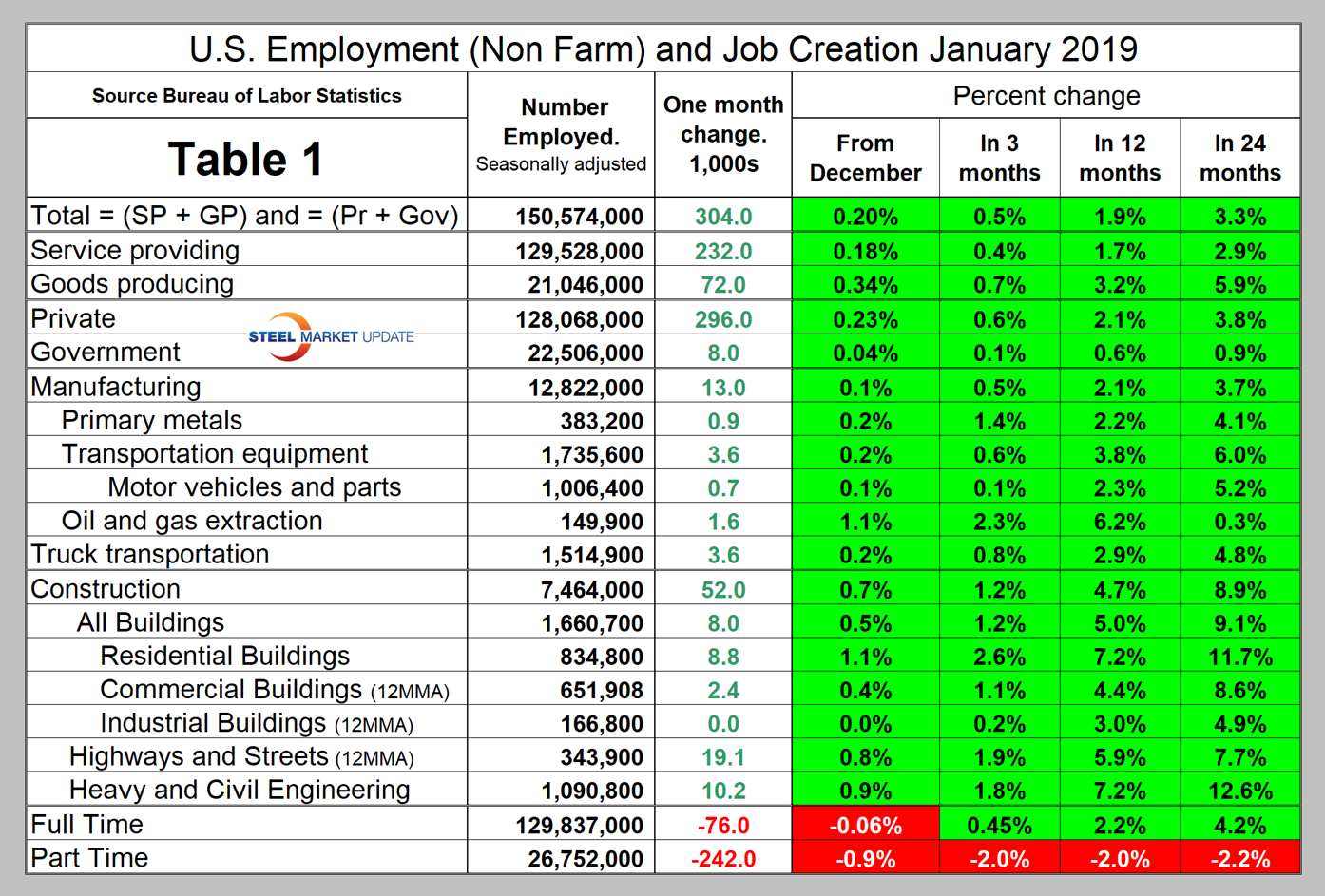
In January, the number employed by the federal government increased by 1,000, state governments lost 2,000 and local gained 9,000. Since February 2010, the low point of total nonfarm payrolls, private employers have added 20,829,000 jobs as government has gained 30,000 (Figure 1).
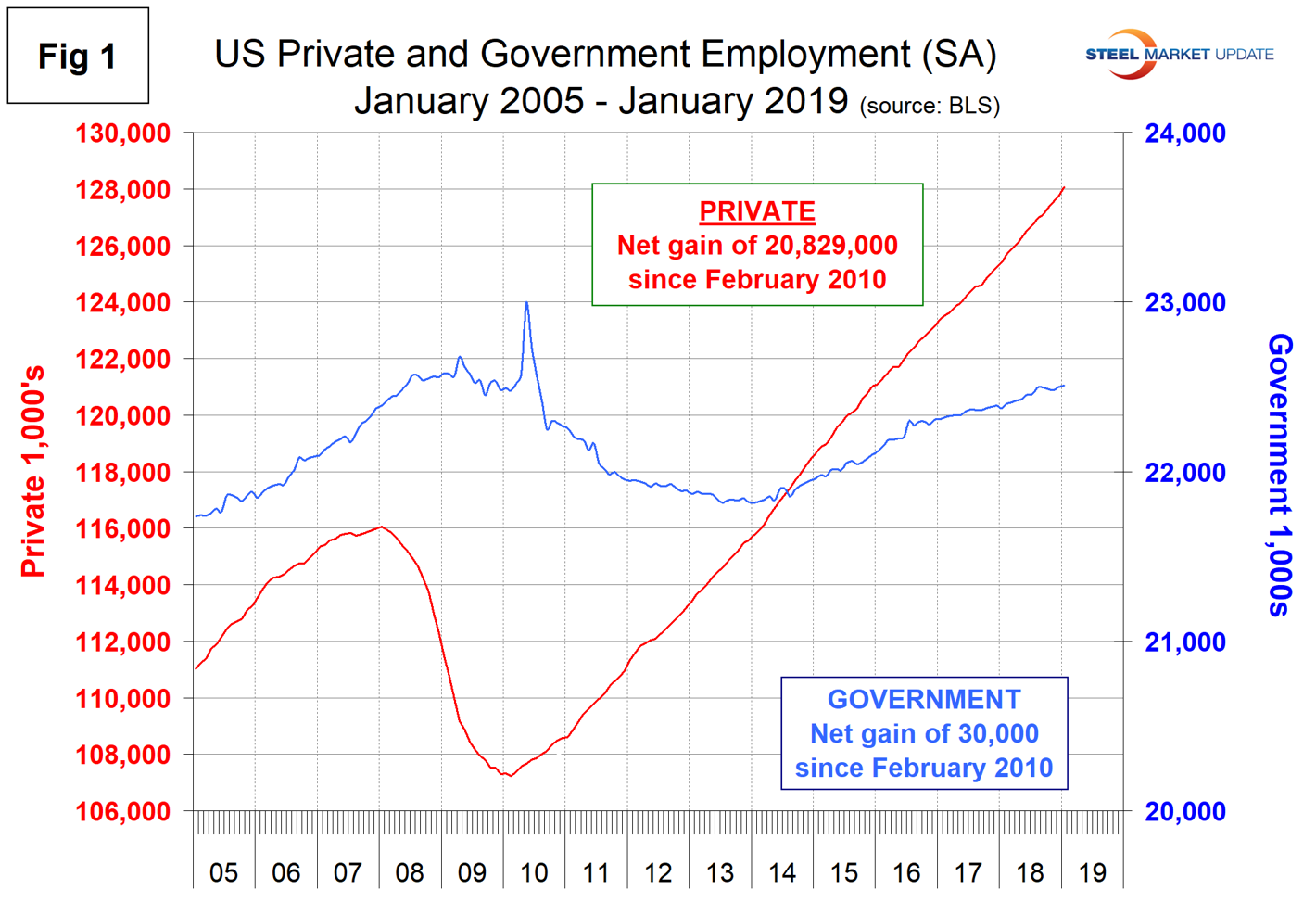
In January, service industries expanded by 232,000 as goods-producing industries, driven mainly by construction and manufacturing, expanded by 72,000 (Figure 2). Since February 2010, service industries have added 17,440,000 and goods-producing 3,419,000 positions. This has been a drag on wage growth since the recession as service industries on average pay less than goods-producing industries such as manufacturing. The good news is that in the last 24 months, the rate of job creation in goods-producing industries on a percentage basis has been almost twice as great as in service industries.
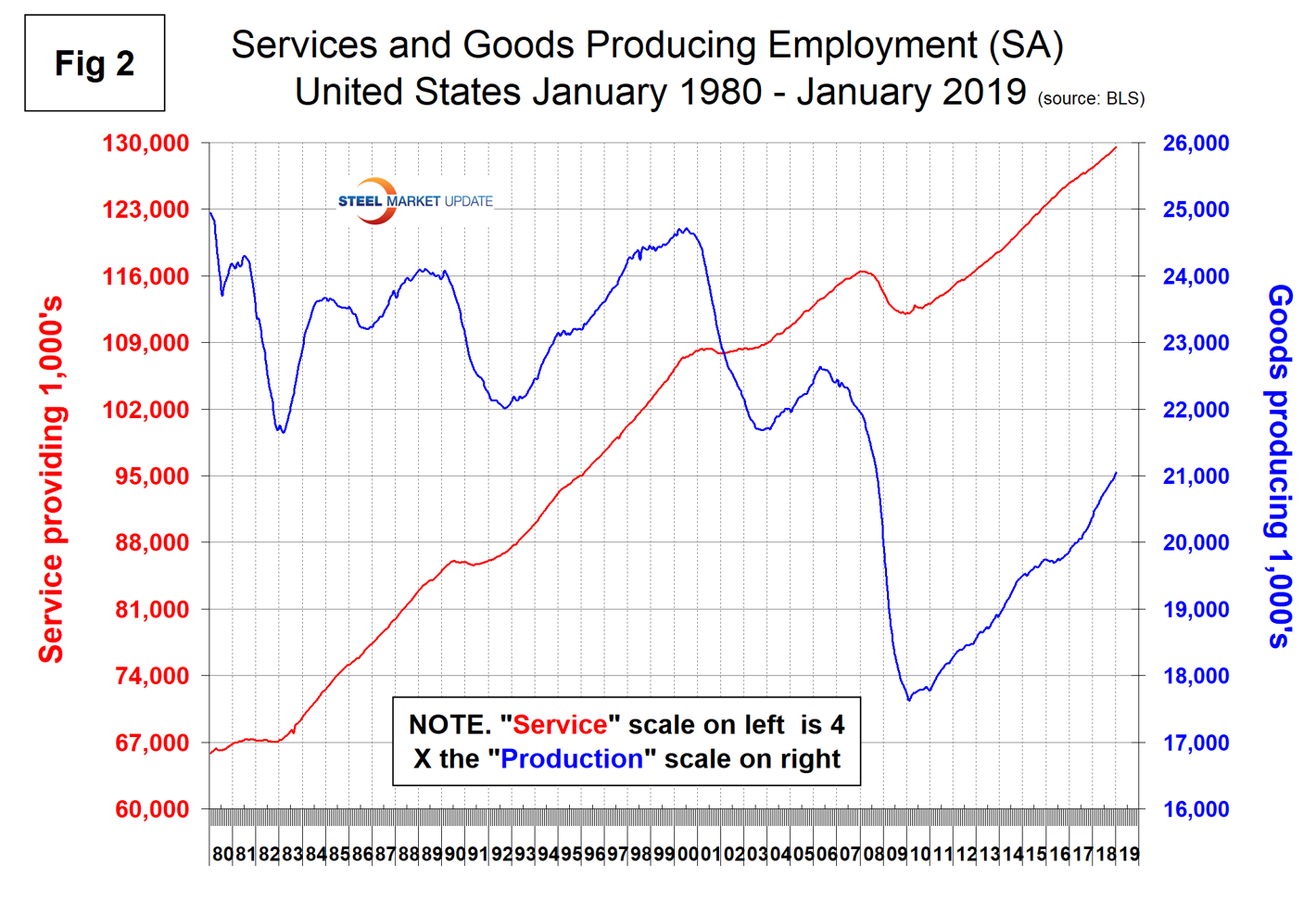
Construction was reported to have gained 52,000 jobs in January; the total was 319,000 in 2018. According to the Associated General Contractors of America, the industry’s average pay accelerated and unemployment decreased to a historic low in 2018. Officials added that according to the association’s annual outlook, released earlier this week, most contractors plan to continue hiring in 2019 but are having difficulty finding qualified workers. The number of unemployed workers who have construction experience is at the lowest January level in 19 years.
Manufacturing is trailing construction as a job creator. Manufacturing gained 13,000 jobs in January after a gain of 264,000 in 2018. Figure 3 shows the history of construction and manufacturing employment since January 2005. Construction has added 1,964,000 jobs and manufacturing 1,369,000 since the recessionary employment low point in February 2010.
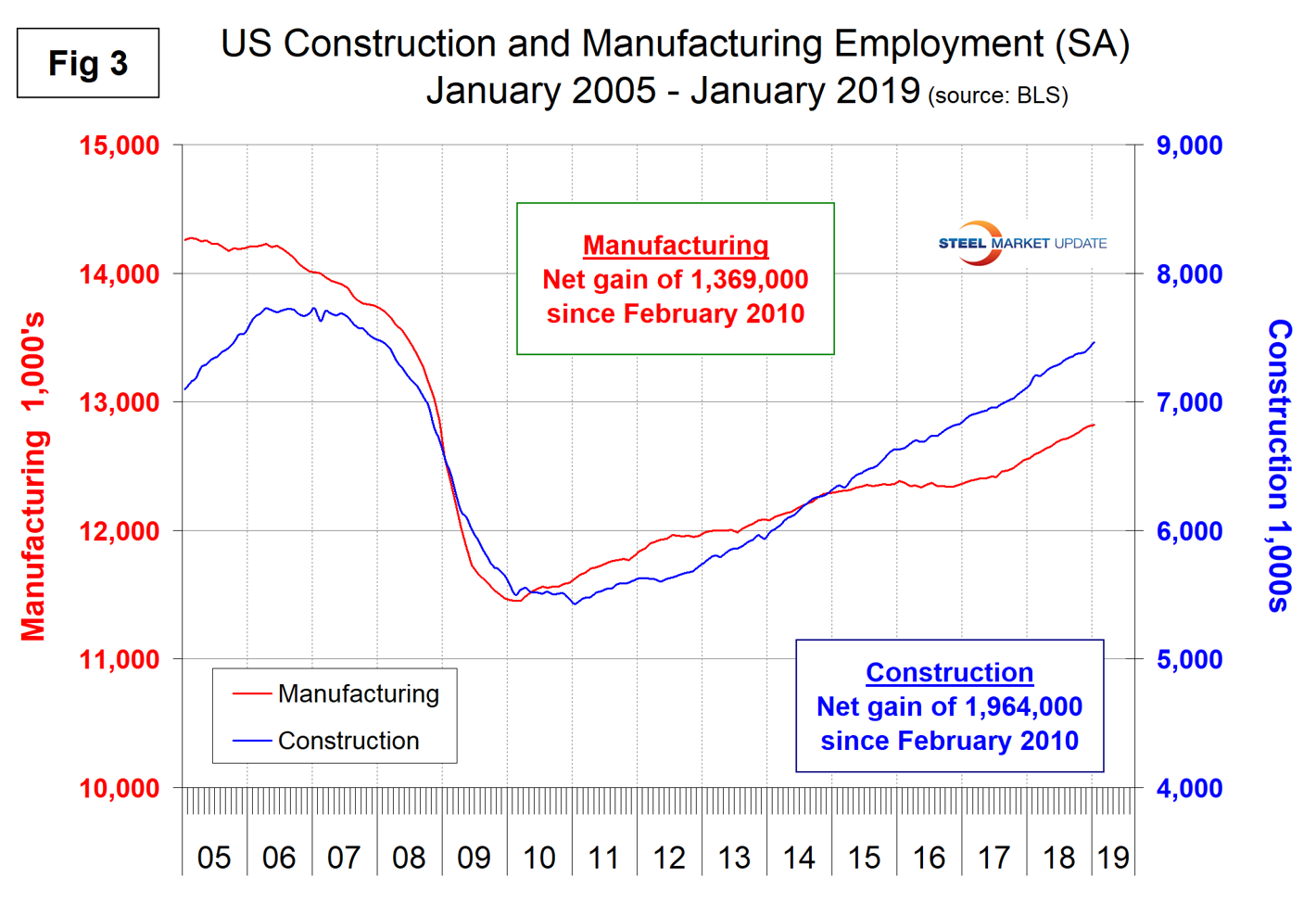
Note, the subcomponents of both manufacturing and construction shown in Table 1 don’t add up to the total because we have only included those with the most relevance to the steel industry.
Table 1 shows that primary metals gained 900 jobs in January, and in the last 24 months, gains on a percentage basis were a little better than for total manufacturing. Figure 4 shows the history of primary metals employment since January 2003.
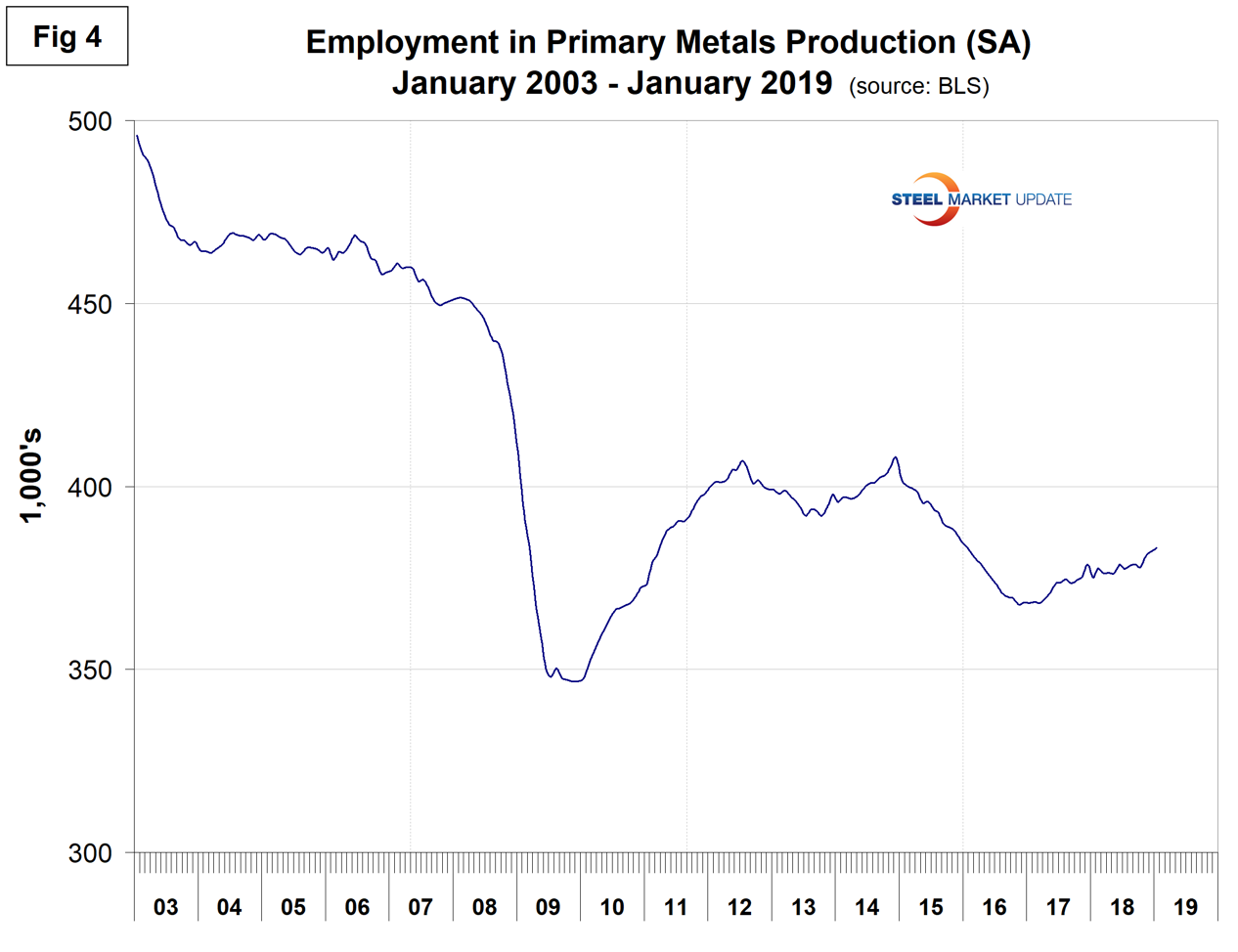
Motor vehicles and parts industries were reported to have gained 700 jobs in January after gaining 1,800 in December. Figure 5 shows the history of motor vehicles and parts employment.
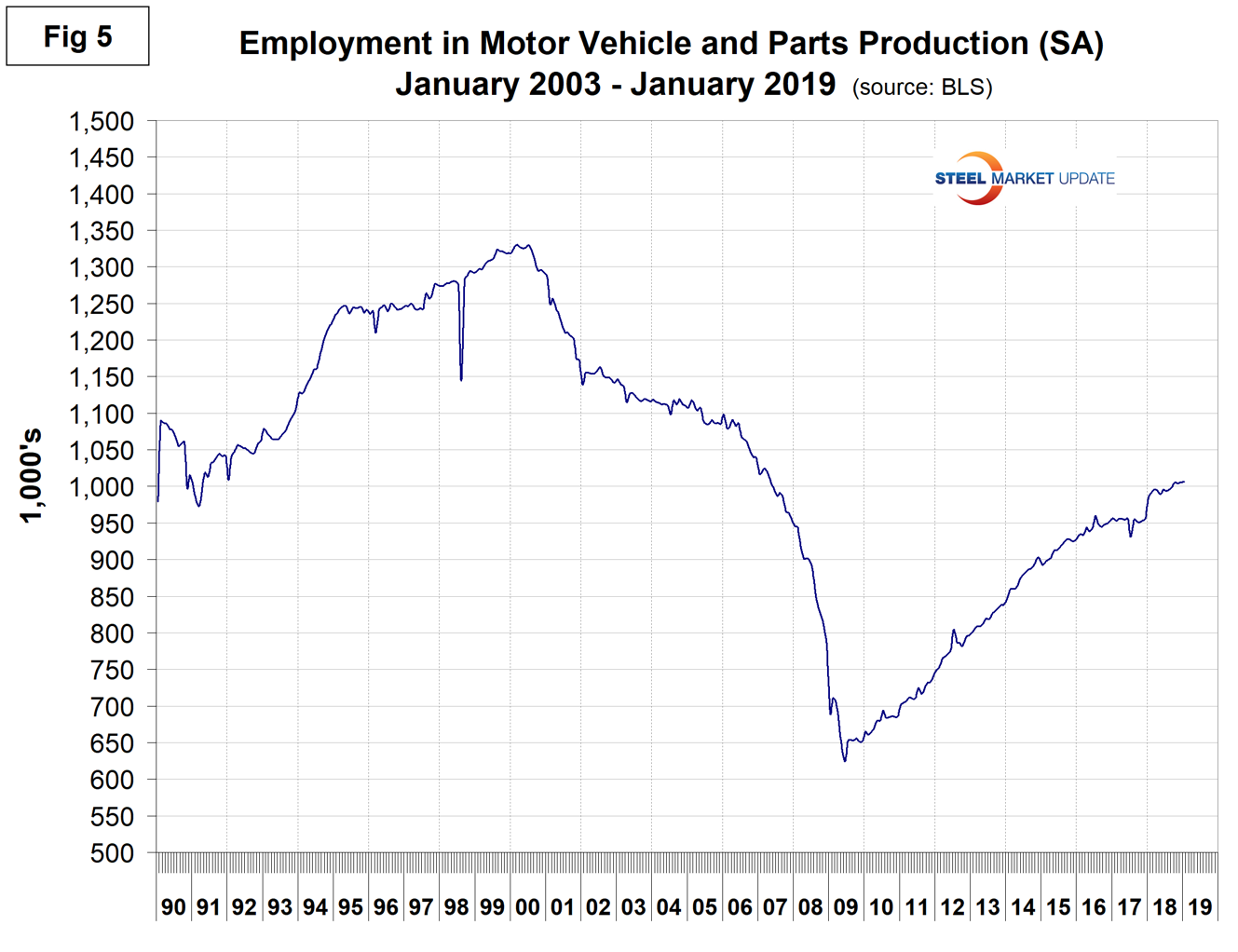
Trucking gained 3,600 jobs in January, following a total gain of 51,000 last year. Employment in truck driving is one of SMU’s recession monitors and Figure 6 suggests that at the present time the economy is still on a roll.
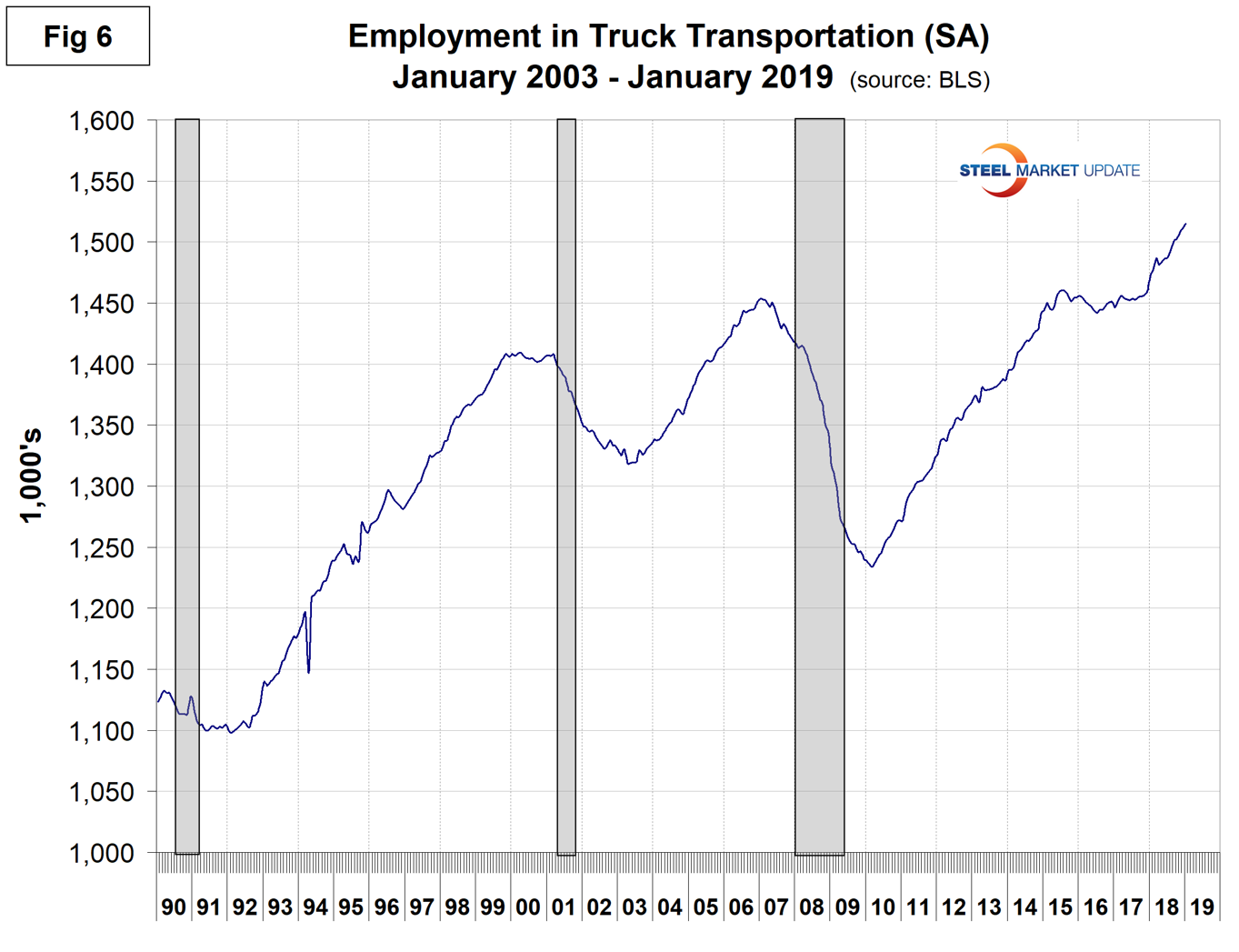
SMU Comment: Manufacturing and construction had solid employment gains last year, which bodes well for steel consumption in at least the first few months of 2019.
Explanation: On the first Friday of each month, the Bureau of Labor Statistics releases the employment data for the previous month. Data is available at www.bls.gov. The BLS employment database is a reality check for other economic data streams such as manufacturing and construction. It is easy to drill down into the BLS database to obtain employment data for many subsectors of the economy. The important point about all these data streams is the direction in which they are headed.

Peter Wright
Read more from Peter WrightLatest in SMU Data and Models

SMU Survey: Buyers’ Sentiment rebounds from multi-year low
Both of SMU’s Steel Buyers’ Sentiment Indices edged higher this week. Current Sentiment rebounded from a near five-year low, while Future Sentiment rose to a two-month high

SMU flat-rolled market survey results now available
SMU’s latest steel buyers market survey results are now available on our website to all premium members.

SMU Survey: Sheet lead times pull back after early-June blip, plate holds
Following the uptick seen two weeks ago, lead times eased this week for all four sheet products tracked by SMU, while plate lead times held steady, according to this week’s market survey.

SMU Survey: Pricing power abruptly shifts to steel buyers
The majority of steel buyers responding to our latest market survey say domestic mills are more willing to talk price on sheet and plate products than they were earlier this month. Sheet negotiation rates rebounded across the board compared to early June, while our plate negotiation rate hit a full 100%.

Service centers: Mill orders down marginally in May
SMU’s Mill Order Index (MOI) declined for a third straight month in May, but only marginally.
